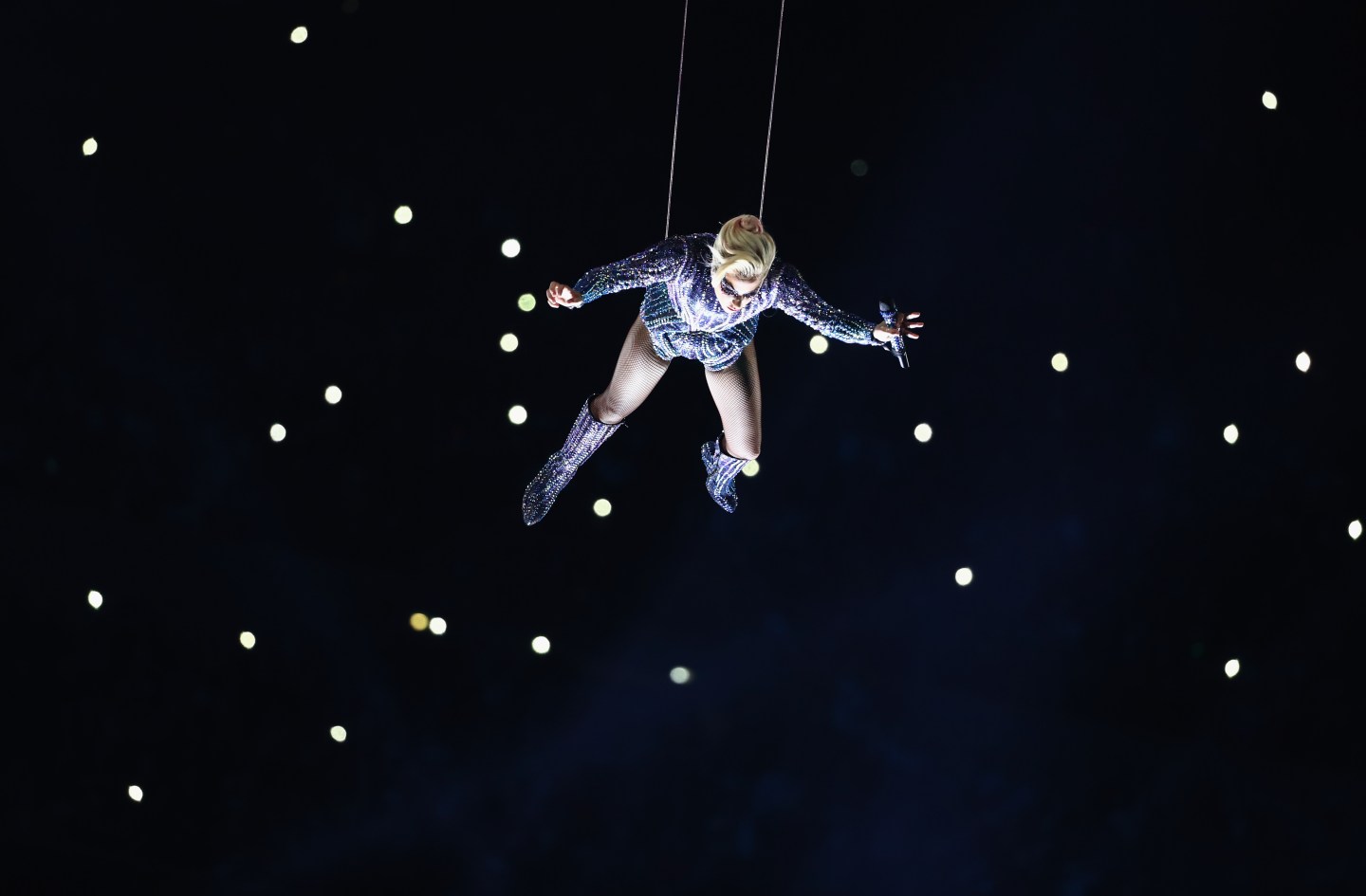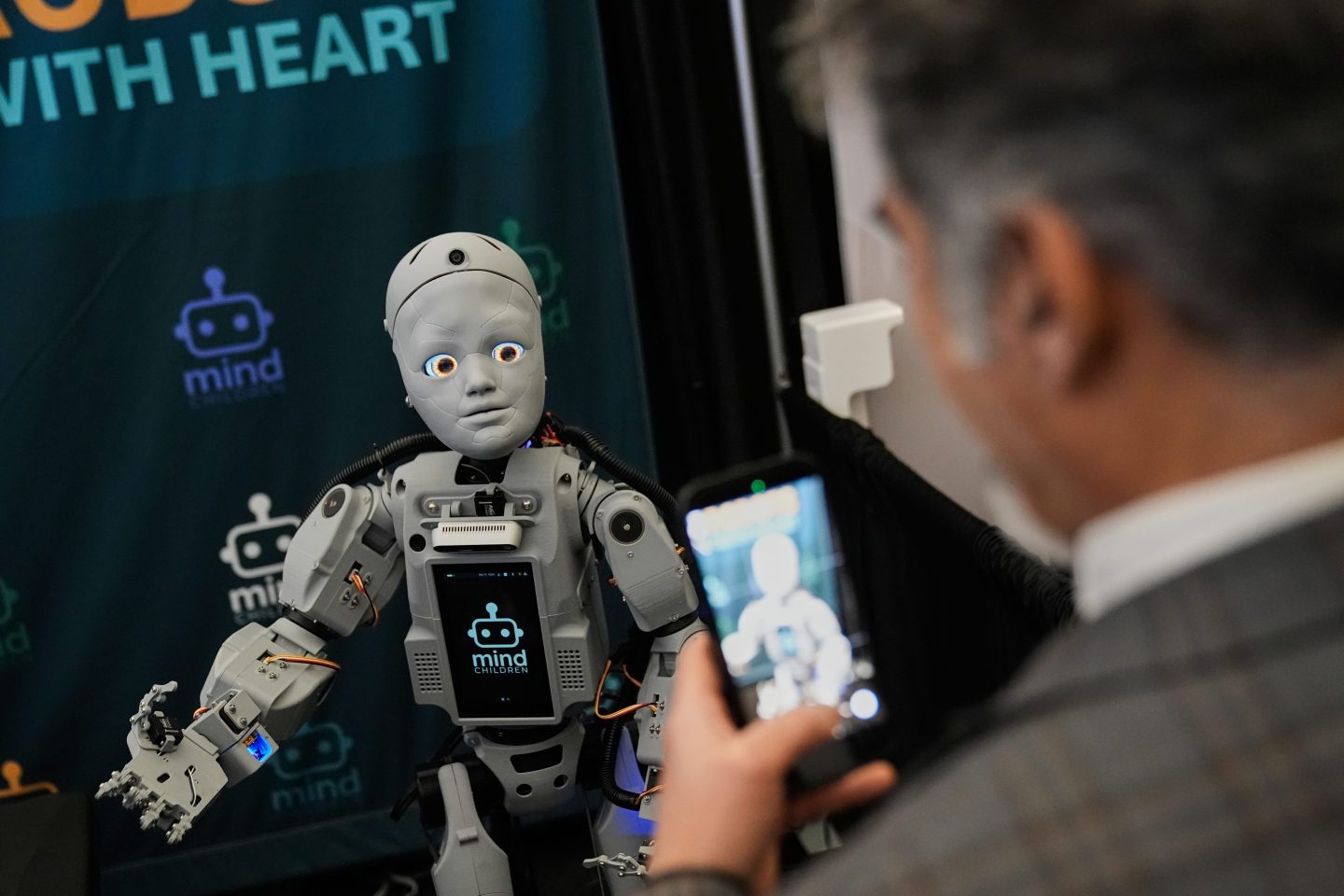Lady Gaga’s Super Bowl LI halftime show on Sunday had something many viewers had never seen before: Hundreds of light-emitting drones flying in a synchronized pattern to show the American flag and, later, the Pepsi logo.
How’d they pull that off? It’s thanks to an Intel (INTC) technology called Shooting Star, which lets programmers design airborne light shows with swarms of drones. The same tech was recently used at Disney World:
Here’s more on how Shooting Star works, via Wired:
Each drone is about a foot long square, weighs just over eight ounces, and sports a plastic and foam body to soften inadvertent impacts. They aren’t as flashy as consumer quadcopters, which is just as well, because you’re not supposed to notice them. Instead, you’re supposed to notice the four billion color combinations created by the onboard LEDs, and the aerial acrobatics choreographed with meticulous coding.
Each drone communicates wirelessly with a central computer to execute its dance routine, oblivious to what the hundreds of machines around it are doing. The system can adapt on the, er, fly, too. Just before showtime, the computer checks the battery level and GPS signal strength of each drone, and assigns roles accordingly. Should a drone falter during the show, a reserve unit takes over within seconds.
Another fun fact: Intel had to tape the drone display well before the Super Bowl to avoid running afoul of airspace rules.
Get Data Sheet, Fortune’s technology newsletter.
The Shooting Star system results in some pretty impressive light displays, but it could also be handy for other uses. Squadrons of coordinating drones with infrared cameras, for instance, could be used in search and rescue operations.
This story was originally published on TIME.com.












